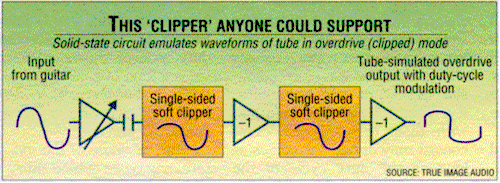Originally posted by teemuk
View Post
Also, I drew the load line of 12AX7 at +B=340V. I drew 3 load lines:
1) Blue represents typical Fender with Rp=100K, Rk=1.5K for plate current of about 1.13mA.
2) Red represents Rp=150k with Rk=3.3k for plate current of 0.7mA.
3) Orange represent Rp=220K, Rk=3.3K for plate current of 0.7mA.
I also drew the horizontal lines for grid voltage increment by +/-0.5V and look at the linearity. It is obvious that the output wave form compresses when the plate swing towards +340V. So all the waveforms has a compressed top like what you described.
From the drawing, if you want asymmetric compression, you should run lower current with smaller Rp so you run and high plate voltage so you get into more of the asymmetrical waveform. But I look at many guitar amps, they run higher Rp like 150K to 220K and plate voltage at 160V to 180V. That seems to be running in more of a linear mode rather than asymmetrical compression. That is doing the opposite of what you described. I experimented with low and high plate voltage, I actually like higher plate voltages.
Do you have any article on those "various filters"?
Thanks


Comment